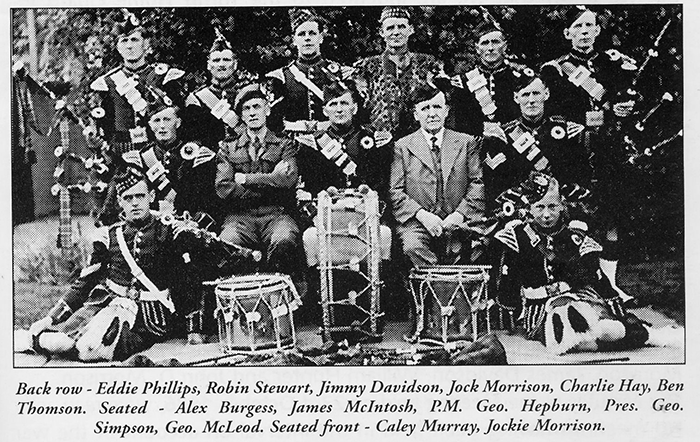
The Aberdeen (Works) Battalion Home Guard pipe band was formed in 1940 under P/M Charles S. Smith (1888-1950), who had been Pipe Major of the Aberdeen City Police Pipe Band for twelve years until his retirement in 1938. (Pictured above is another Aberdeenshire Home Guard band under P/M George Hepburn.)
During the First World War the Aberdeen police band was temporarily disbanded so Charles Smith had played with the Harry Lauder Pipe Band, a combined band of policemen from the Glasgow, Edinburgh, Dundee and Aberdeen forces.
By Jeannie Campbell
The band travelled all over the country for recruitment purposes. Charles Smith was also a bagpipe maker. After retiring from the police he worked as a commissionaire at the BBC Beechgrove Studios in Aberdeen.
The Home Guard (Works) Battalion band continued throughout the war and in 1945 asked the permission of the City Council to re-name the band Aberdeen City Pipe Band, still under the leadership of Charles Smith. Their request was granted.
Still in the north-east, Jim Beedie was the son of a farmworker from Longside, Aberdeenshire, who had served during the First World War with the 6th Battalion the Black Watch. He had been awarded the Croix de Guerre in 1919, had married a Belgian girl, and left the Army in 1920.
He went to Peterhead, but didn’t want to return to farm work so went south to Grimsby to work in the fishing industry. His son Jim was born there shortly afterwards and he learned piping from his father. As a teenager he worked as a fish filleter but when his firm closed for a few months in 1941, Jim, then aged 18 or 19, went to visit relatives in Aberdeen.
Whilst there he received a phone call from a local firm and started work with them as a filleter. He joined the 9th Battalion Harbour Home Guard and their pipe band, under Pipe Major Kynoch.
This band piped the 10th Battalion Gordon Highlanders when they left for a tour of duty as the regiment’s own band was recruiting in England, and played for the Gordons on other occasions. The band also played at the King’s Theatre, Aberdeen, as part of a Home Guard amateur programme, and were, of course, the most popular act by far!
They played at garden parties and similar events and marched the Home Guard out to various places in Aberdeenshire. Another member of the band was Piper Willie Patterson, who was reputed to be a good piobaireachd player. Jim also met Pipe Major Charles Smith of the Aberdeen (Works) Battalion of the Home Guard, who was then working as a gardener at BBC Aberdeen.
The 2nd (Glasgow) battalion of the Home Guard had a pipe band during the war. In 1946 many of its members got together with others who had served during the war to form the Caber Feidh Pipe Band under P/M William Reid, brother of P/M Robert Reid.
In August 1945 a band competition was held in Edinburgh. The results were:
Open: 1 Shotts and Dykehead, P/M MacAllister 2 Hutchesontown (Glasgow) British Legion, P/M Appleby 3 Newtongrange Lothian, P/M O MacIntosh 4 Bowhill Colliery, P/M C Sutherland
First Grade: 1 Edinburgh Special City Police, P/M S Halliday 2 West Calder, P/M T Crookston 3 Pumpherston, P/M R. Brown
Juvenile Bands: 1 Newtongrange Juveniles, P/M O MacIntosh 2 47th St Brides BB, P/M Simons 3 Eyemouth ATC, P/M R Barton
Jack Willis was unable to fulfil his ambition to be a piper until after the war: ‘I was born at Kirkhill, Lanarkshire. I couldn’t get into a pipe band. I wanted to be a piper but I was an apprentice butcher so I worked Saturdays and the Home Guard practiced a Saturday afternoon.
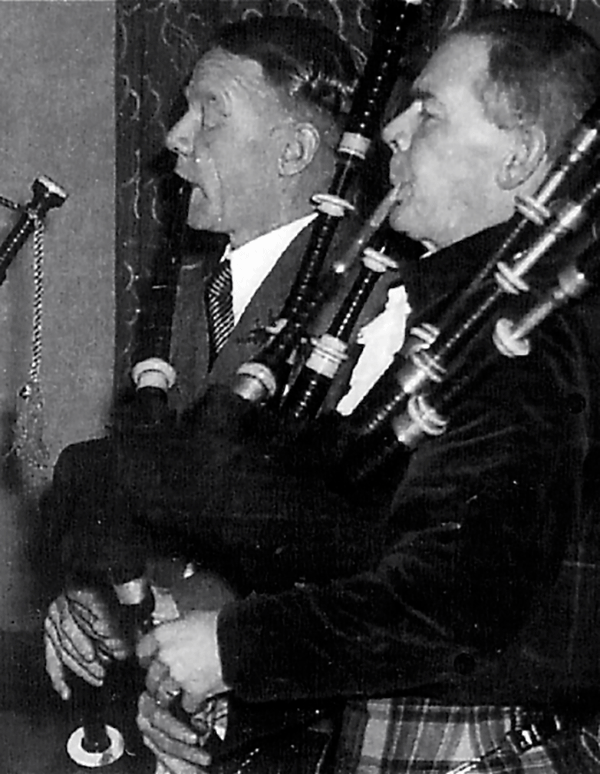
‘In 1946 I was called up to the Cameronians, Scottish Rifles, which is defunct now. The corporal said: ‘Are there any pipers or anyone who’d like to be a piper?’ I gave him my particulars and I got sent up to the School of Piping at Dreghorn camp. Not the Castle – the top pipers went there; that was the pipe majors’ course. I was four months at Dreghorn then back to the Army.
‘The Cameronians were based in Gibraltar. I was a cook for six months because I was a butcher but eventually I went to the band as a learner piper. Learner pipers were virtually used as fatigue men. Anyway, I learned what I could. When I got demobbed I joined the British Legion band in Hamilton then a different Legion band in Cambuslang.
‘After that I gave piping up for many, many years. Now I’m back with the Veteran Pipers’ Society and I’ve learned more in the last year and a half than I learned in the last 30 years.’
- This concludes this very interesting series. To read earlier excerpts type WW2 into the Search field.


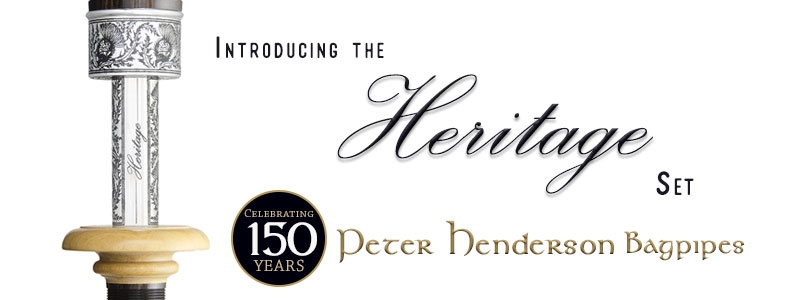

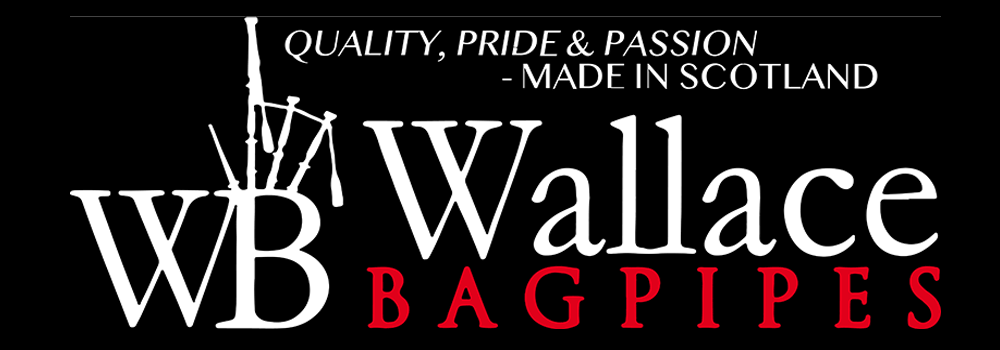




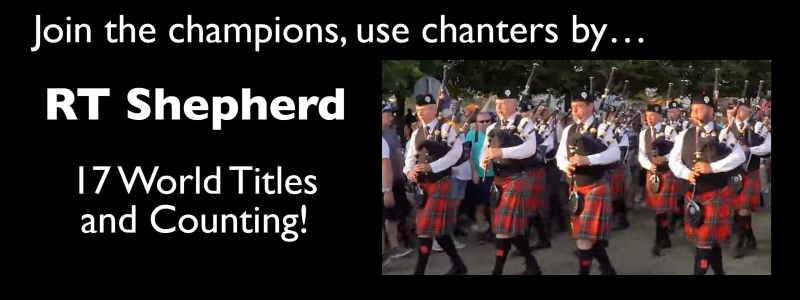
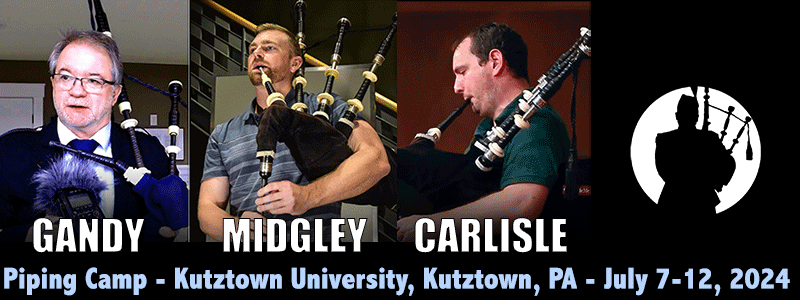


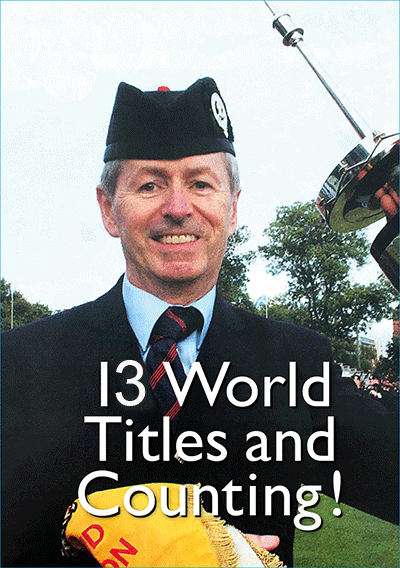

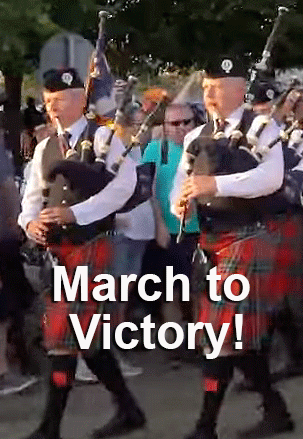







Where was the 9th Harbour Battalion of the Home Guard located? Probably not in Aberdeen/Aberdeenshire; I only know of the following Home Guard battalions there:
1st Aberdeenshire (Buchan)
2nd Aberdeenshire (Central) (Alford)
3rd Aberdeenshire (South & Kincardineshire) (Banchory)
4th City of Aberdeen (Turriff)
5th Aberdeenshire
6th Aberdeenshire (12th GPO) (Aberdeen)
7th City of Aberdeen (Works)
9th City of Aberdeen (University)